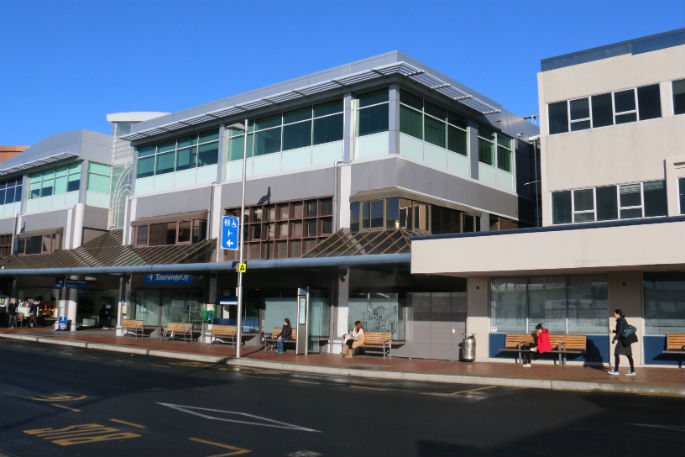Claims the council civic heart project is endangered by liquefaction issues on the central city site are being denied by the councillor chairing the civic heart project steering committee, Gail McIntosh.
Tauranga resident Ken Evans says the liquefaction issue is contained in a council report on the project and he sent copies to each of the city councillors.
'The council will be required to issue a permit to build a new high rise building on the site and this is the building for themselves,” says Ken.
'The council will have to say because of the liquefaction possibility, the foundations of this building will have to be pretty serious. It strains credibility that they have voted to build on a site they know has liquefaction and they can't say they don't know because I sent them their own report.
'Each on one of them got it, just the page on the liquefaction part.”
Gail McIntosh says liquefaction has to be considered in this day and age.
'My understanding is it's not an issue that we aren't aware of,” says Gail. 'Before anyone builds a building they would look at everything again. It's an issue that our consultants said is not an undue concern.
'What I'm saying is anyone who builds a building and does the planning right, with the right engineers and consultants, you know how to deal with the land that you have got. It's not a reason to rule out that site.”
The report is seismic risk on the city council website.
Page nine deals with liquefaction. Analysis of cone penetration tests on site finds that the sub surface is subject to liquefaction in a major earthquake. The engineers uses a 1/100 year return event- the one per cent chance of a major shake.
Liquefaction caused by such and earthquake may cause foundation end bearing failure of concrete pads and footings as well as significant differential settlement in the order of 100-200mm across the building footprint. End bearing failure means that there is potential for larger strains to be placed on some foundations as a result of others failing as a result of liquefaction.
Liquefaction is indicated from a depth of 2.5m below ground level and continues to be indicated down to 17m at the Durham St side and 13m at the Willow St side. Liquefaction may extend deeper than 17m but this will require further testing to confirm.
Liquefaction will have the greatest impact on the administration building due to the location of the foundations at around 2.5m below ground in the liquefiable zone.
The administration building is also located at the bottom of the slope where groundwater levels are closer to the surface.
By contrast the foundations for buildings A, B and the library are located 1.5m below ground level above the liquefiable zone.
The liquefaction potential at Baycourt is considered to be low to very low and may result in minor differential spreading.
Ken says the Willow Street buildings are on an old beach, he says is marked by the bank behind the council buildings that leads up to Baycourt.
'That bank used to be the edge of the harbor,” says Ken.
He goes on to say the area also has underground watercourses, one of which gave the name to Spring Street.
Ken refers to a pile driving mishap during construction of the second harbor bridge about a kilometer from the site as another indicator of a soft sub surface.
'They put a pile down and it disappeared. They put another pile on top of it.
'They had to grout that pile to stop it sinking. The harbor beside the strand was all part of the harbour at some time.”
The current buildings are not earthquake prone, and they will provide occupants the ability to safely exit in a major earthquake, but they may not be useable afterwards.
Making them useable post disaster will require significant strengthening, new structural elements within the building to resist lateral loads in addition to the existing reinforced concrete frames, and possibly significant new foundations to mitigate the risk of liquefaction.
The works would involve significant expense.



5 comments
Forget the ground liquidity...........
Posted on 12-10-2016 15:14 | By ROCCO
TCC should not even be looking at building this bloody thing & the new council should can it immediately.Don't worry about a sinking building if it goes ahead it will threaten the financial liquidity of Tauranga.
golly gosh
Posted on 12-10-2016 16:29 | By old trucker
My GOSH surely the old building is good enough, but NO have to have all the BAUBLES, they should move to Tauriko,but NO we have to stay in town so we can go to Red square and spend 1 hr having coffee, and out at a Bureta for a hour with a TCC car parked out side having coffee with their lanyard back to front,sure is CRAFTY,all the (CONS) ULTANTS will be drawing on this piggy go round.Thanks No1.
Ken is right
Posted on 12-10-2016 16:39 | By Crash test dummies
The consultants reports make it clear there is a liquefaction issue for the existing building, so obviously there will be for anything built there.It is a TCC report, paid by TCC, why the denial?
My understanding is............
Posted on 12-10-2016 20:02 | By groutby
that the current building has already been "signed off" for demolition...if correct (add info please) there must already be a plan in place for the new "Palace"....anyone know any different?
AN ABSOLUTE ABERRATION
Posted on 14-10-2016 07:28 | By kellbell
SOMEONE NEEDS TO ARRANGE FOR A TAURANGA PUBLIC POLL TO BE UNDERTAKEN TO HOLD THOSE COUNCILLORS SUPPORTING THIS THING TO ACCOUNT AND NAILING THE TCC STAFF DRIVING THE PROJECT .TRANSPARENCY ACCOUNTABILITY AND HONESTY ARE ALL MISSING HERE.
Leave a Comment
You must be logged in to make a comment.